Resume
Aerospace Engineer Cover Letter Examples

May 29, 2025
|
12 min read
Your aerospace engineering cover letter can soar with these tips. Learn how to highlight your skills and experience in a way that lifts your application above the competition. It's all about preparing for takeoff in your career.
4.70 Average rating
Rated by 348 people
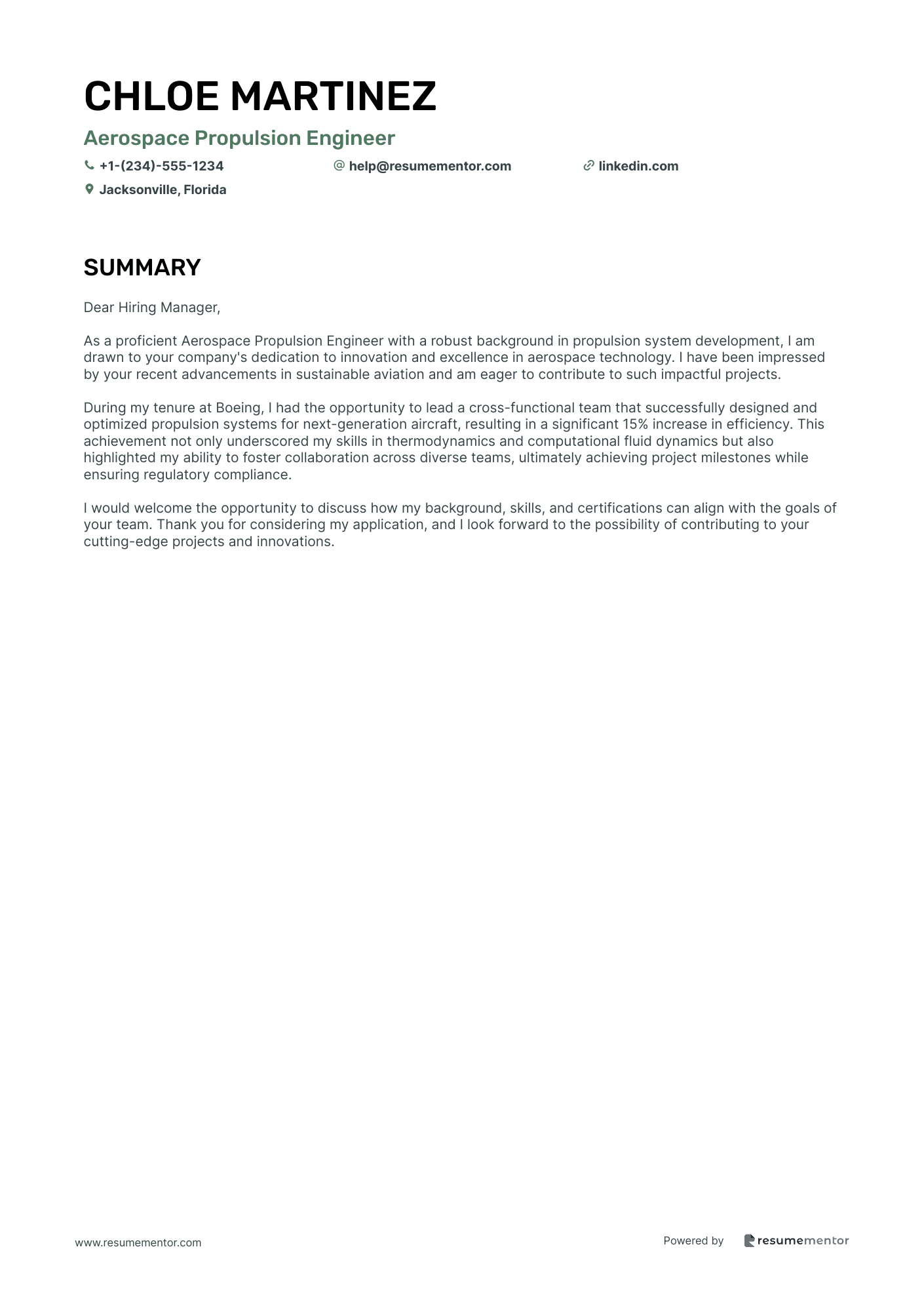
Aerospace Propulsion Engineer
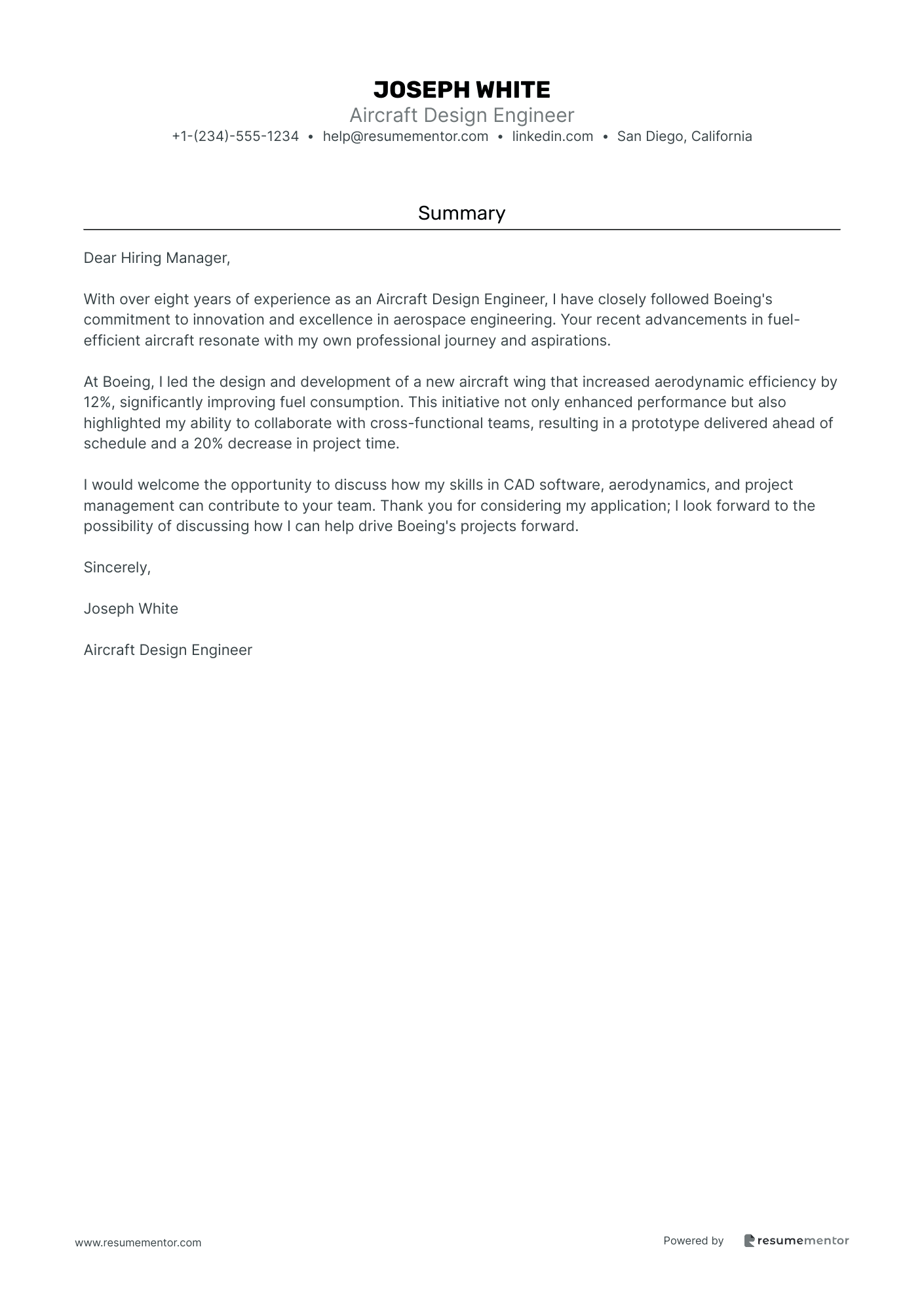
Aircraft Design Engineer
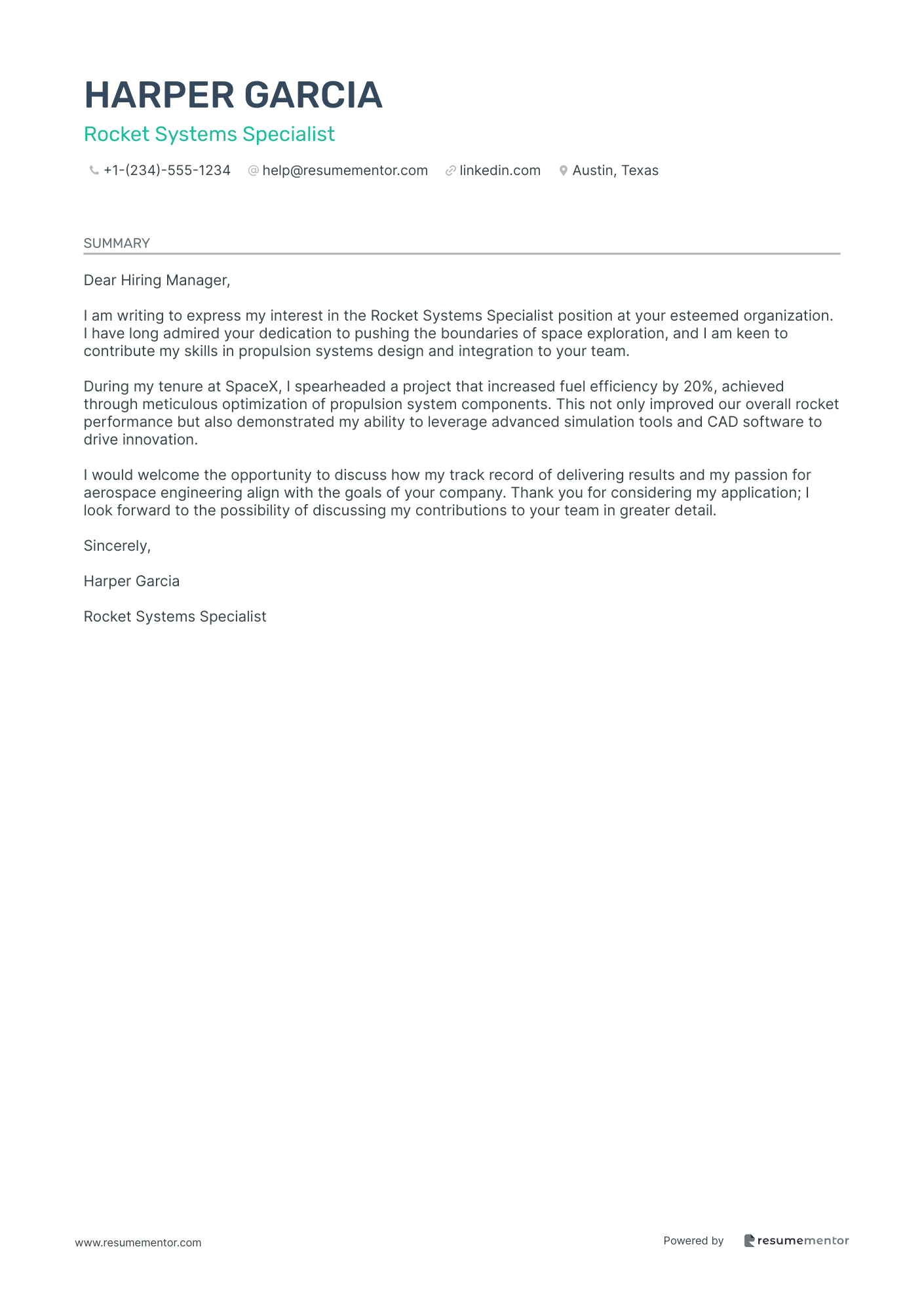
Rocket Systems Specialist
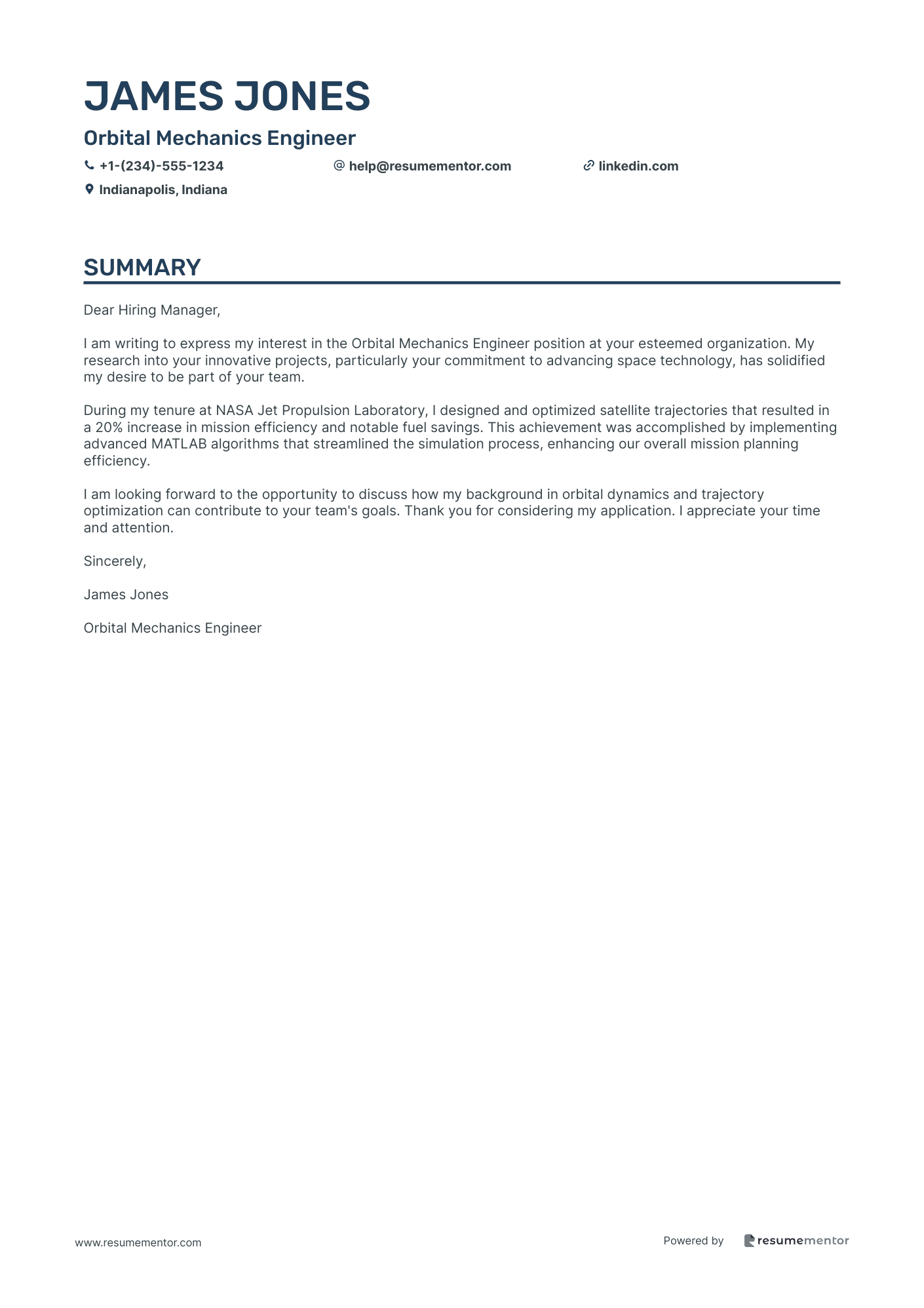
Orbital Mechanics Engineer
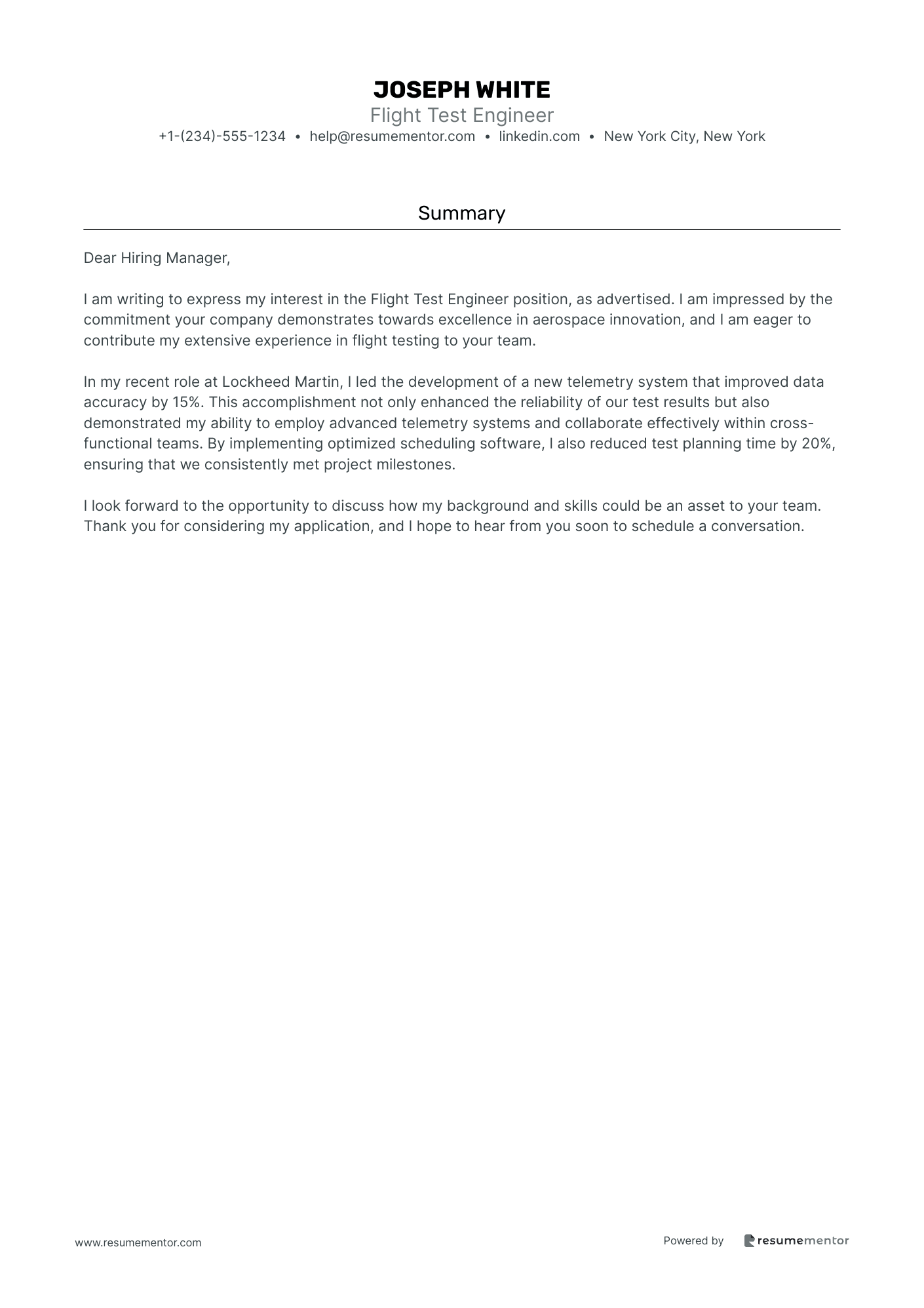
Flight Test Engineer
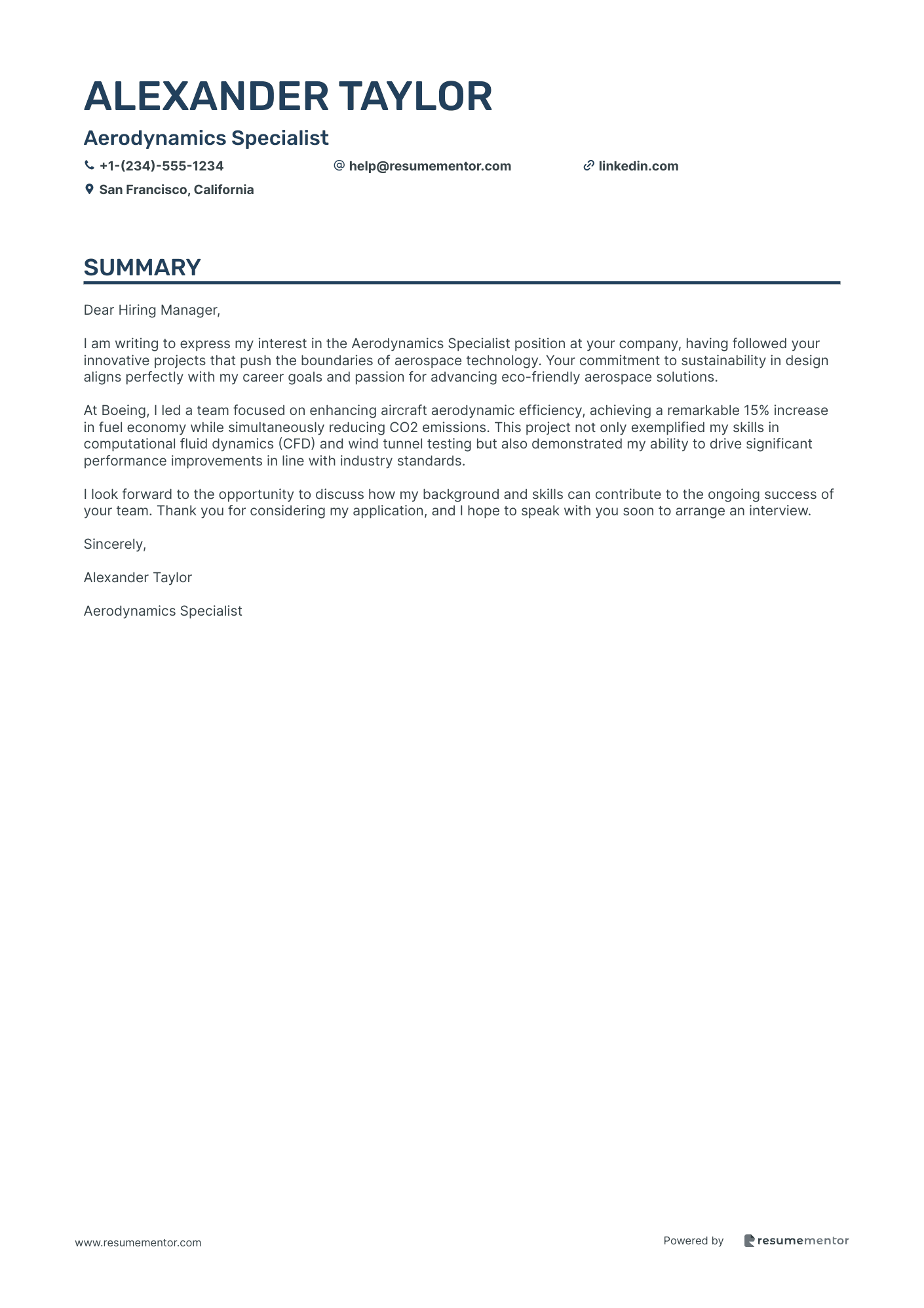
Aerodynamics Specialist

Missile Systems Engineer
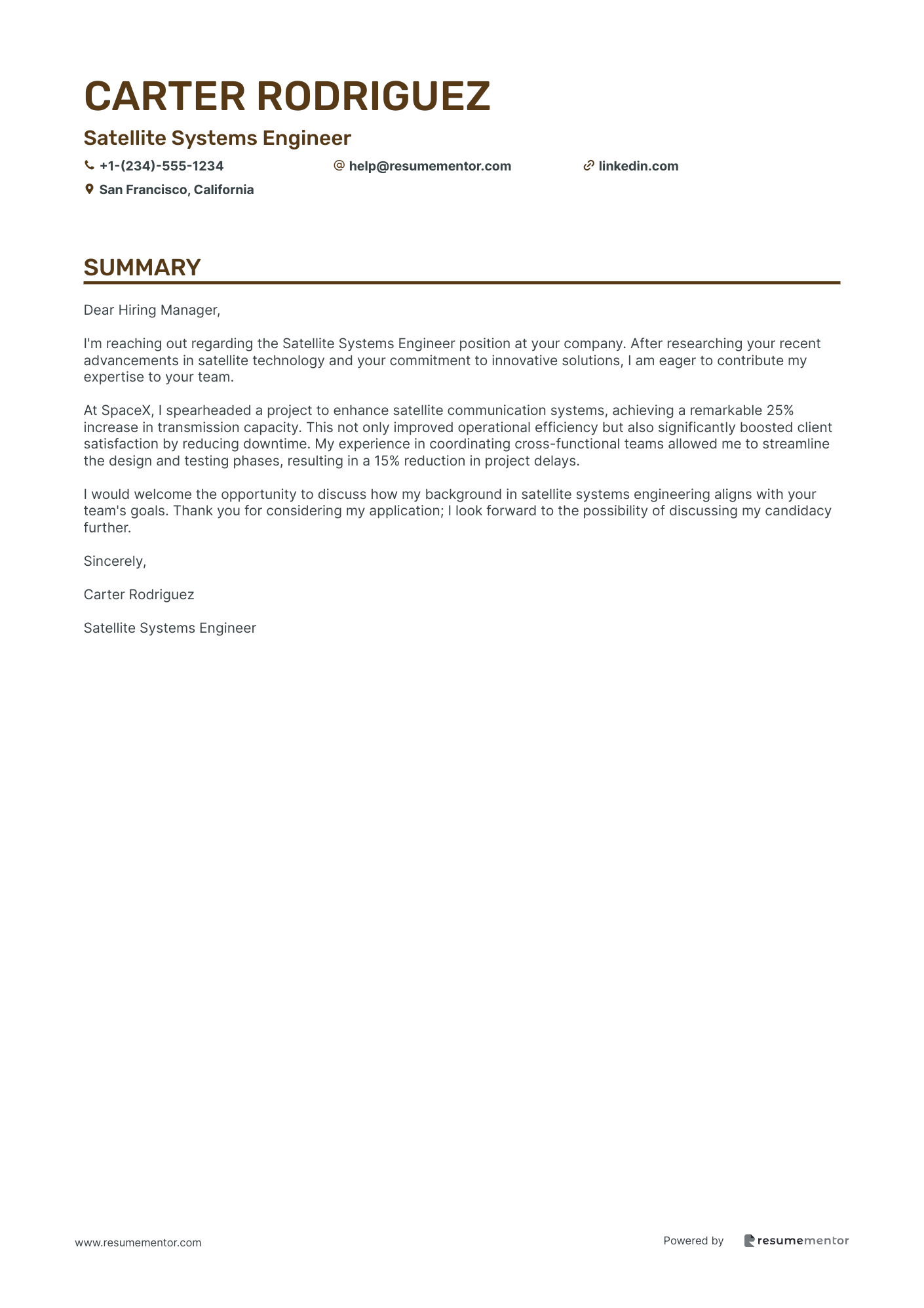
Satellite Systems Engineer
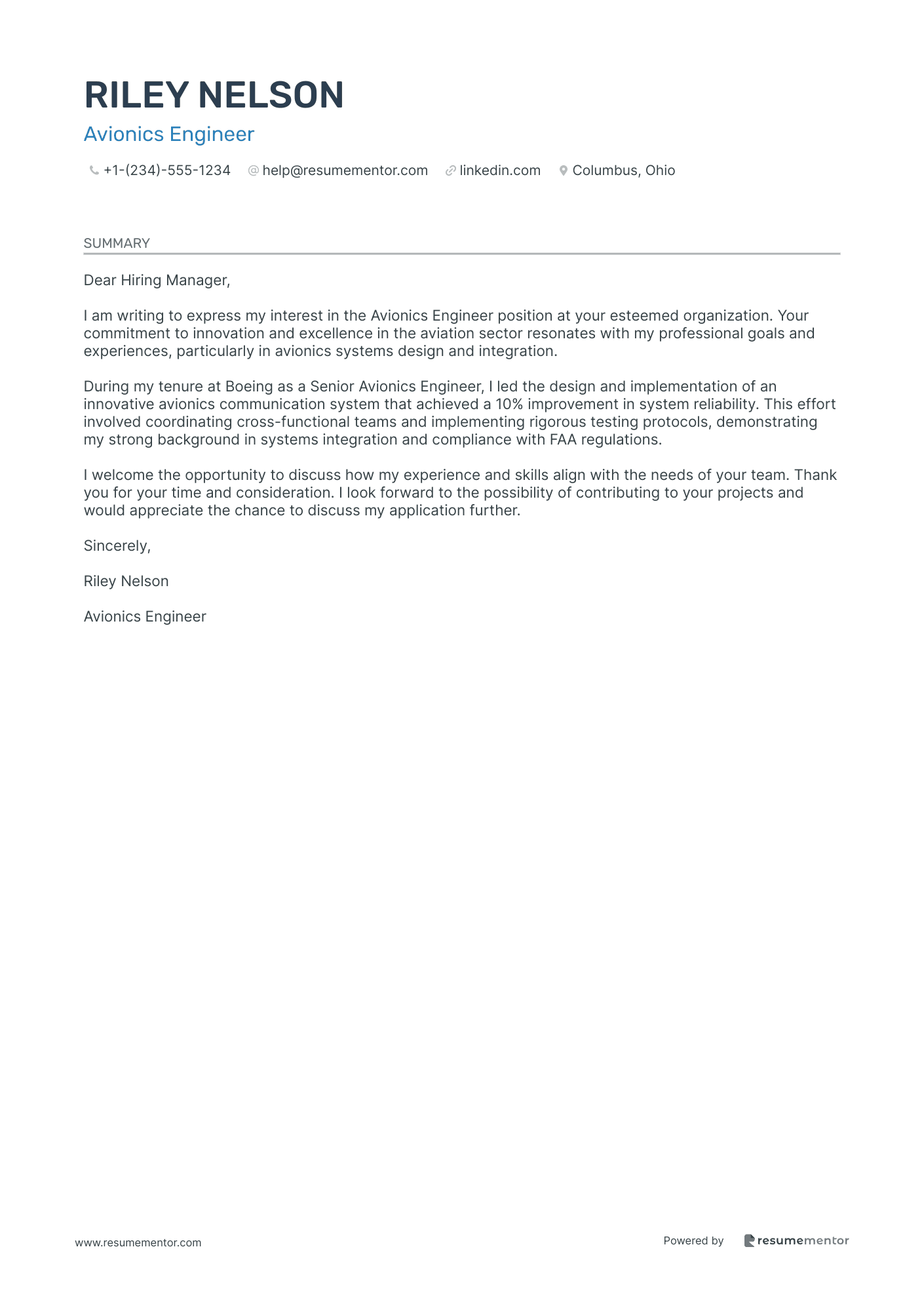
Avionics Engineer
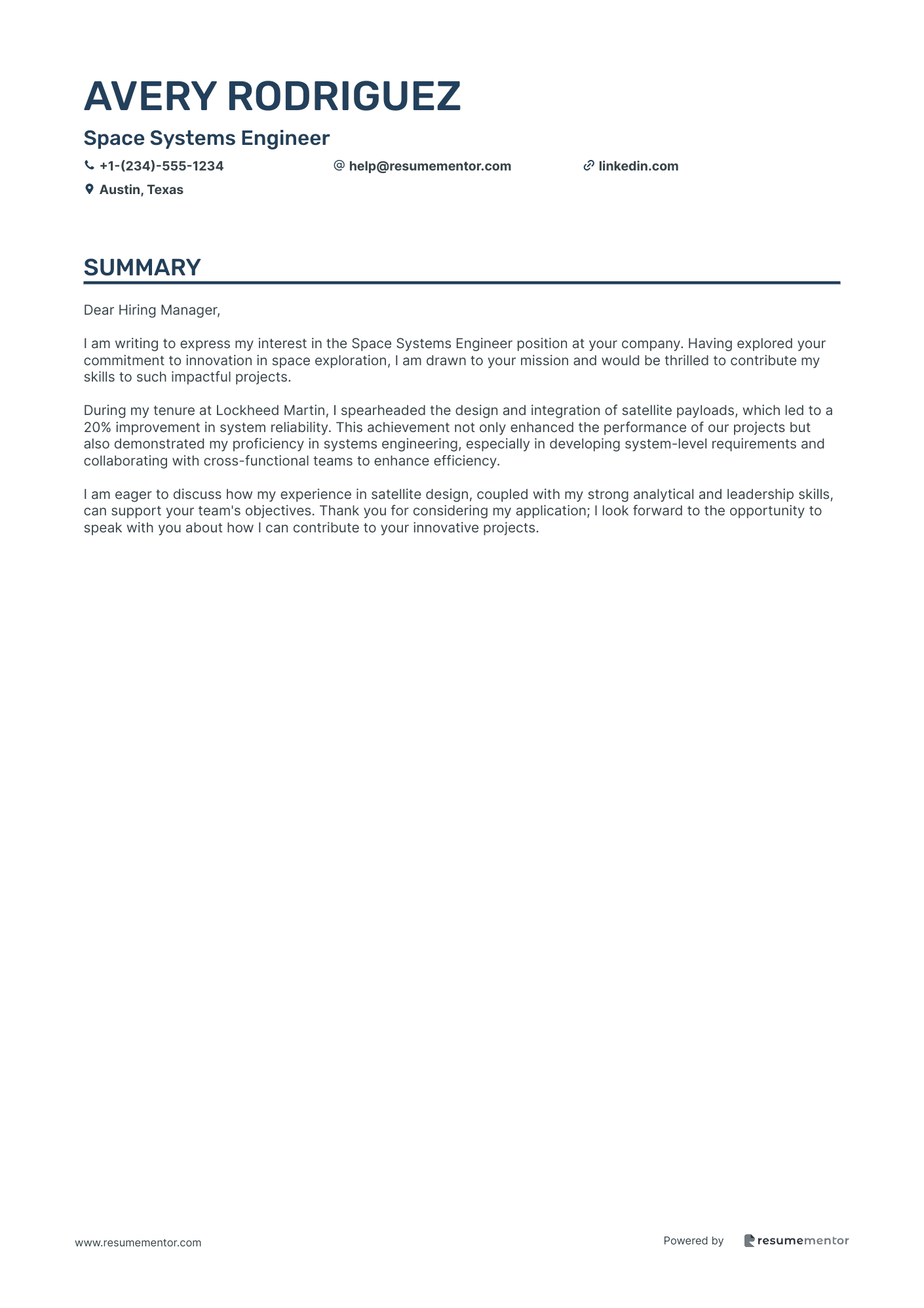
Space Systems Engineer
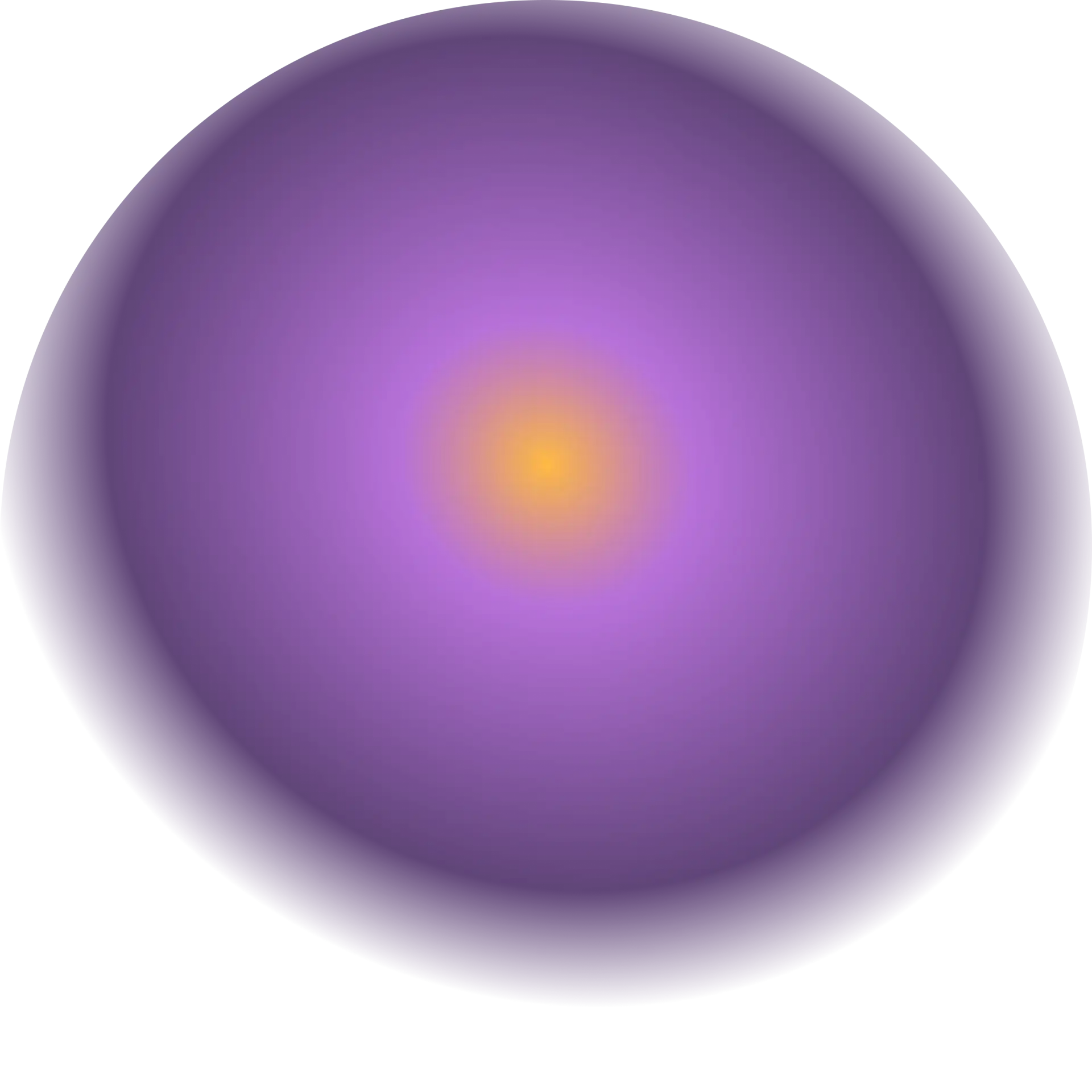
Aerospace Propulsion Engineer cover letter sample
When applying for this role, it's important to highlight your technical expertise in fluid dynamics, thermodynamics, and propulsion systems. Be sure to mention any experience with computational fluid dynamics (CFD) or other simulation tools. Include details about relevant projects, internships, or research work where you've applied these skills effectively. Certifications in aerospace engineering principles or any specialized training can make your application stand out. Use specific examples that demonstrate your problem-solving abilities and how your contributions led to successful project outcomes, following a 'skill-action-result' format.
Chloe Martinez
Aerospace Propulsion Engineer
Summary
Dear Hiring Manager,
As a proficient Aerospace Propulsion Engineer with a robust background in propulsion system development, I am drawn to your company's dedication to innovation and excellence in aerospace technology. I have been impressed by your recent advancements in sustainable aviation and am eager to contribute to such impactful projects.
During my tenure at Boeing, I had the opportunity to lead a cross-functional team that successfully designed and optimized propulsion systems for next-generation aircraft, resulting in a significant 15% increase in efficiency. This achievement not only underscored my skills in thermodynamics and computational fluid dynamics but also highlighted my ability to foster collaboration across diverse teams, ultimately achieving project milestones while ensuring regulatory compliance.
I would welcome the opportunity to discuss how my background, skills, and certifications can align with the goals of your team. Thank you for considering my application, and I look forward to the possibility of contributing to your cutting-edge projects and innovations.
Aircraft Design Engineer cover letter sample
When applying for this position, be sure to highlight any experience in aerospace engineering or related fields. Showcase your skills in CAD software and any projects involving design optimization. If you have taken specialized courses, like 'Aircraft Structures' or 'Aerodynamics', include these in your application. Provide specific examples of how your designs have improved efficiency or reduced costs, using clear metrics. Demonstrating strong problem-solving abilities and teamwork experience will also strengthen your application, showing your potential contributions to future projects.
Joseph White
Aircraft Design Engineer
Summary
Dear Hiring Manager,
With over eight years of experience as an Aircraft Design Engineer, I have closely followed Boeing's commitment to innovation and excellence in aerospace engineering. Your recent advancements in fuel-efficient aircraft resonate with my own professional journey and aspirations.
At Boeing, I led the design and development of a new aircraft wing that increased aerodynamic efficiency by 12%, significantly improving fuel consumption. This initiative not only enhanced performance but also highlighted my ability to collaborate with cross-functional teams, resulting in a prototype delivered ahead of schedule and a 20% decrease in project time.
I would welcome the opportunity to discuss how my skills in CAD software, aerodynamics, and project management can contribute to your team. Thank you for considering my application; I look forward to the possibility of discussing how I can help drive Boeing's projects forward.
Sincerely,
Joseph White
Aircraft Design Engineer
Rocket Systems Specialist cover letter sample
When crafting your cover letter, focus on any experience with aerospace technology or propulsion systems. Highlight your technical skills, especially in software tools related to simulations or system designs. If you've participated in relevant projects or workshops, mention these to demonstrate your hands-on experience. Use specific examples of how your efforts led to improvements in system efficiency or safety. Emphasize your ability to work collaboratively with engineers and technicians, showing that you can contribute effectively to team projects. Keep your achievements clear and results-focused.
Harper Garcia
Rocket Systems Specialist
Summary
Dear Hiring Manager,
I am writing to express my interest in the Rocket Systems Specialist position at your esteemed organization. I have long admired your dedication to pushing the boundaries of space exploration, and I am keen to contribute my skills in propulsion systems design and integration to your team.
During my tenure at SpaceX, I spearheaded a project that increased fuel efficiency by 20%, achieved through meticulous optimization of propulsion system components. This not only improved our overall rocket performance but also demonstrated my ability to leverage advanced simulation tools and CAD software to drive innovation.
I would welcome the opportunity to discuss how my track record of delivering results and my passion for aerospace engineering align with the goals of your company. Thank you for considering my application; I look forward to the possibility of discussing my contributions to your team in greater detail.
Sincerely,
Harper Garcia
Rocket Systems Specialist
Orbital Mechanics Engineer cover letter sample
When applying for this role, it's essential to highlight your experience with orbital trajectories and spacecraft design. Showcase any relevant software skills, such as proficiency in MATLAB or CAD tools. If you've worked on satellite missions or completed advanced projects in astrodynamics, make sure to mention these. Use specific examples to demonstrate how your analytical skills have led to successful mission planning or optimization. Providing metrics or outcomes will strengthen your application, illustrating the impact of your contributions in previous roles.
James Jones
Orbital Mechanics Engineer
Summary
Dear Hiring Manager,
I am writing to express my interest in the Orbital Mechanics Engineer position at your esteemed organization. My research into your innovative projects, particularly your commitment to advancing space technology, has solidified my desire to be part of your team.
During my tenure at NASA Jet Propulsion Laboratory, I designed and optimized satellite trajectories that resulted in a 20% increase in mission efficiency and notable fuel savings. This achievement was accomplished by implementing advanced MATLAB algorithms that streamlined the simulation process, enhancing our overall mission planning efficiency.
I am looking forward to the opportunity to discuss how my background in orbital dynamics and trajectory optimization can contribute to your team's goals. Thank you for considering my application. I appreciate your time and attention.
Sincerely,
James Jones
Orbital Mechanics Engineer
Flight Test Engineer cover letter sample
When crafting your cover letter, focus on your technical experience with flight systems and your familiarity with testing protocols. Highlight any relevant certifications, such as FAA Section 33 or Section 25 knowledge, to show your qualifications. Discuss your hands-on experience with data analysis and your proficiency in software tools like MATLAB or Simulink. Provide examples of successful test outcomes and how your problem-solving skills improved project efficiency. Use specific metrics to demonstrate the impact of your contributions on safety and performance standards.
Joseph White
Flight Test Engineer
Summary
Dear Hiring Manager,
I am writing to express my interest in the Flight Test Engineer position, as advertised. I am impressed by the commitment your company demonstrates towards excellence in aerospace innovation, and I am eager to contribute my extensive experience in flight testing to your team.
In my recent role at Lockheed Martin, I led the development of a new telemetry system that improved data accuracy by 15%. This accomplishment not only enhanced the reliability of our test results but also demonstrated my ability to employ advanced telemetry systems and collaborate effectively within cross-functional teams. By implementing optimized scheduling software, I also reduced test planning time by 20%, ensuring that we consistently met project milestones.
I look forward to the opportunity to discuss how my background and skills could be an asset to your team. Thank you for considering my application, and I hope to hear from you soon to schedule a conversation.
Aerodynamics Specialist cover letter sample
Highlight your experience with computational fluid dynamics (CFD) software and any relevant projects. Emphasize your knowledge of airflow principles and their applications in design. If you've worked on wind tunnel testing or developed design modifications based on data analysis, include these details. Demonstrate teamwork by providing examples of collaboration with engineers and designers to improve performance. Use the 'skill-action-result' framework to show how your contributions led to successful project outcomes or enhanced efficiency in past roles.
Alexander Taylor
Aerodynamics Specialist
Summary
Dear Hiring Manager,
I am writing to express my interest in the Aerodynamics Specialist position at your company, having followed your innovative projects that push the boundaries of aerospace technology. Your commitment to sustainability in design aligns perfectly with my career goals and passion for advancing eco-friendly aerospace solutions.
At Boeing, I led a team focused on enhancing aircraft aerodynamic efficiency, achieving a remarkable 15% increase in fuel economy while simultaneously reducing CO2 emissions. This project not only exemplified my skills in computational fluid dynamics (CFD) and wind tunnel testing but also demonstrated my ability to drive significant performance improvements in line with industry standards.
I look forward to the opportunity to discuss how my background and skills can contribute to the ongoing success of your team. Thank you for considering my application, and I hope to speak with you soon to arrange an interview.
Sincerely,
Alexander Taylor
Aerodynamics Specialist
Missile Systems Engineer cover letter sample
When applying for this position, it’s important to showcase your technical background in areas like systems engineering or aerospace technology. Include any hands-on experience with software tools such as MATLAB or Simulink, as this is often essential. Highlight any relevant projects, internships, or coursework that demonstrate your ability to analyze and test systems. Use examples that illustrate your problem-solving skills and teamwork in project environments. Showing how you contributed to past projects, with a focus on innovation and efficiency, will strengthen your application.
Nora Wright
Missile Systems Engineer
Summary
Dear Hiring Manager,
I am writing to express my interest in the Missile Systems Engineer position within your organization. I admire the commitment to innovation and excellence in defense technology demonstrated by your company, and I am eager to contribute my expertise in missile propulsion systems to advance these initiatives.
During my tenure at Lockheed Martin, I led the propulsion system design for a critical defense missile project, achieving a 20% reduction in fuel consumption. This effort not only enhanced the project’s efficiency but also resulted in significant cost savings, showcasing my ability to implement innovative solutions that align with your company’s goals for cutting-edge technology.
I would welcome the opportunity to discuss how my experience and skills can align with the objectives of your engineering team. Thank you for considering my application; I appreciate your time and look forward to the possibility of an interview.
Satellite Systems Engineer cover letter sample
When applying for this role, highlight your experience with satellite design, integration, and testing. Emphasize any knowledge of RF systems, telemetry, and command operations. Mention relevant software skills, such as proficiency in systems modeling tools or simulation software. If you've participated in projects involving satellite launches or ground control systems, include those details. Use metrics to show how your contributions improved system performance or efficiency, following a 'task-action-result' format to demonstrate your impact and problem-solving abilities.
Carter Rodriguez
Satellite Systems Engineer
Summary
Dear Hiring Manager,
I'm reaching out regarding the Satellite Systems Engineer position at your company. After researching your recent advancements in satellite technology and your commitment to innovative solutions, I am eager to contribute my expertise to your team.
At SpaceX, I spearheaded a project to enhance satellite communication systems, achieving a remarkable 25% increase in transmission capacity. This not only improved operational efficiency but also significantly boosted client satisfaction by reducing downtime. My experience in coordinating cross-functional teams allowed me to streamline the design and testing phases, resulting in a 15% reduction in project delays.
I would welcome the opportunity to discuss how my background in satellite systems engineering aligns with your team's goals. Thank you for considering my application; I look forward to the possibility of discussing my candidacy further.
Sincerely,
Carter Rodriguez
Satellite Systems Engineer
Avionics Engineer cover letter sample
When applying for this role, it’s important to highlight any relevant technical experience with avionics systems. Emphasize your knowledge of electrical and software systems specific to aircraft. Certifications in aviation standards or safety protocols are valuable, so mention them clearly. Use concrete examples where your expertise led to measurable improvements, such as enhanced safety or efficiency. Focus on your ability to troubleshoot and streamline processes, demonstrating a result-driven mindset that benefits the overall engineering team and project goals.
Summary
Dear Hiring Manager,
I am writing to express my interest in the Avionics Engineer position at your esteemed organization. Your commitment to innovation and excellence in the aviation sector resonates with my professional goals and experiences, particularly in avionics systems design and integration.
During my tenure at Boeing as a Senior Avionics Engineer, I led the design and implementation of an innovative avionics communication system that achieved a 10% improvement in system reliability. This effort involved coordinating cross-functional teams and implementing rigorous testing protocols, demonstrating my strong background in systems integration and compliance with FAA regulations.
I welcome the opportunity to discuss how my experience and skills align with the needs of your team. Thank you for your time and consideration. I look forward to the possibility of contributing to your projects and would appreciate the chance to discuss my application further.
Sincerely,
Riley Nelson
Avionics Engineer
Space Systems Engineer cover letter sample
When applying for this role, highlight your technical skills in systems design and integration. Stress any experience with spacecraft systems or satellite technologies. If you have worked with tools like MATLAB, Simulink, or CAD software, make sure to mention them. Include any certifications or training in aerospace engineering. Provide specific examples of projects where your contributions improved system performance or reliability. Use the ‘skill-action-result’ format to demonstrate how your work led to successful outcomes, showing your impact on previous teams or projects.
Avery Rodriguez
Space Systems Engineer
Summary
Dear Hiring Manager,
I am writing to express my interest in the Space Systems Engineer position at your company. Having explored your commitment to innovation in space exploration, I am drawn to your mission and would be thrilled to contribute my skills to such impactful projects.
During my tenure at Lockheed Martin, I spearheaded the design and integration of satellite payloads, which led to a 20% improvement in system reliability. This achievement not only enhanced the performance of our projects but also demonstrated my proficiency in systems engineering, especially in developing system-level requirements and collaborating with cross-functional teams to enhance efficiency.
I am eager to discuss how my experience in satellite design, coupled with my strong analytical and leadership skills, can support your team's objectives. Thank you for considering my application; I look forward to the opportunity to speak with you about how I can contribute to your innovative projects.
Related Articles
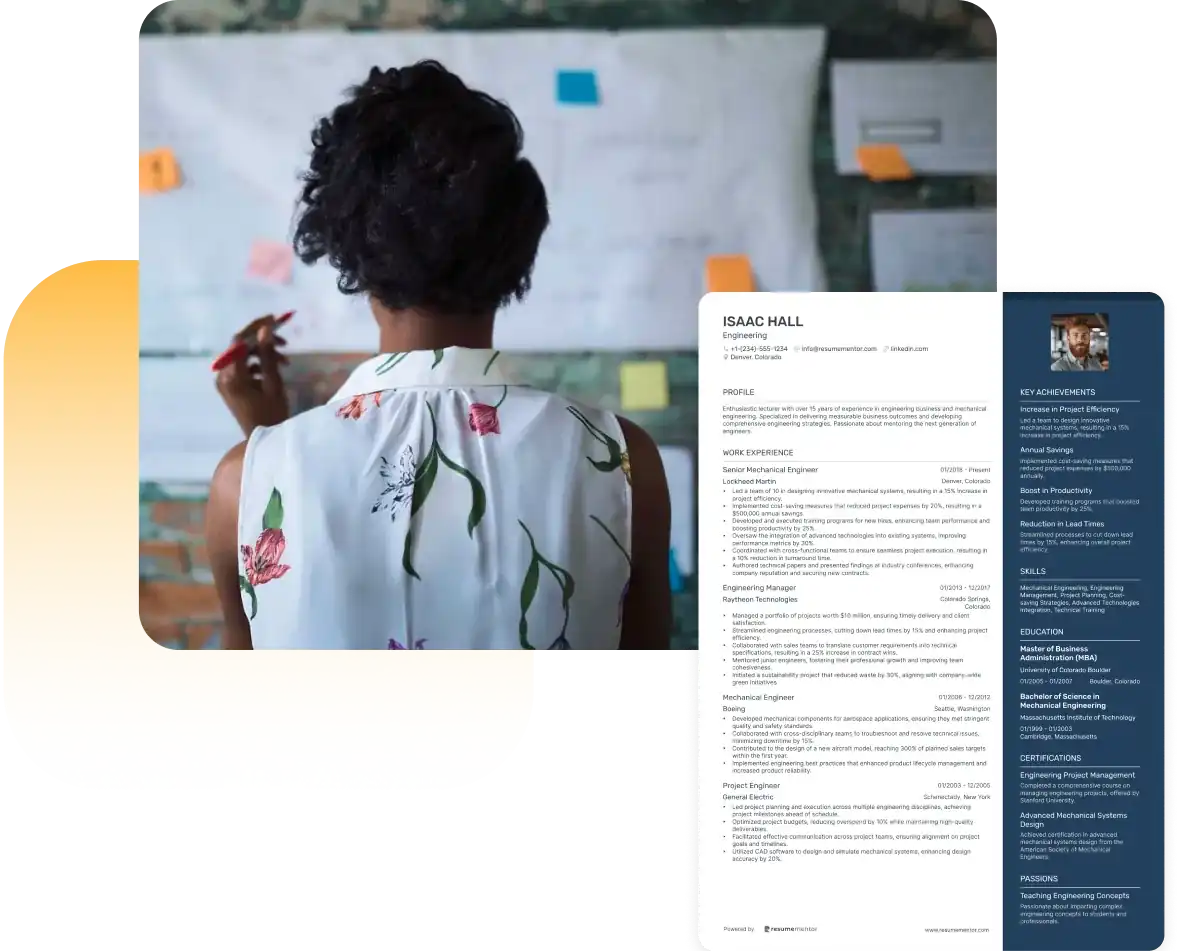
Continue Reading
Check more recommended readings to get the job of your dreams.
Resume
Resources
Tools
© 2025. All rights reserved.
Made with love by people who care.
